Discover the simple steps to install window blinds without drilling, ensuring a damage-free and efficient process for enhancing your home’s privacy and aesthetic.
Are you tired of drilling holes in your walls to install window blinds? Or maybe you’re renting and don’t want to damage the walls with permanent fixtures? Whatever the reason, there’s a solution that doesn’t involve drilling. In this blog post, I’ll share with you how to install window blinds without drilling.
It’s an easy and affordable way to add privacy and style to your windows, without any hassle or mess. So let’s get started!
Key takeaways:
- No-drill blinds include tension rod blinds, magnetic blinds, self-adhesive blinds, suction cup blinds, and hook & loop blinds.
- No-drill blinds are great for renters and homeowners who want to avoid wall or frame damage.
- No-drill blinds are easy to install and don’t require special tools.
- Some disadvantages of no-drill blinds include potential lack of security, weight limitations, and limitations on window functionality.
- Before installing, accurately measure windows and choose the right type of no-drill blind for your needs.
What Are No-Drill Blinds?
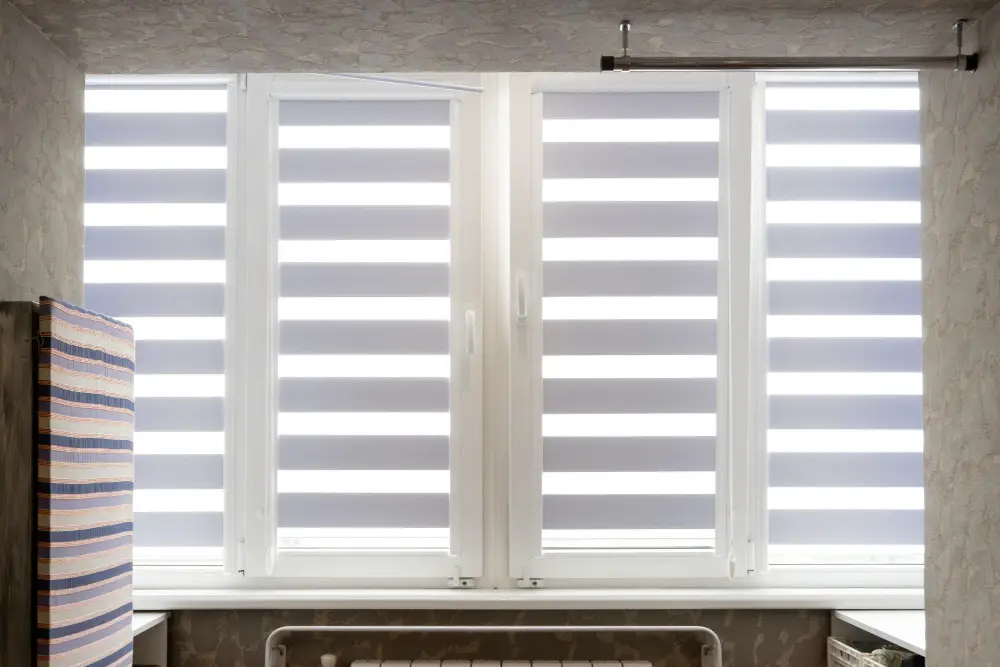
They come in various styles, including tension rod blinds, magnetic blinds, self-adhesive blinds, suction cup blinds and hook & loop (Velcro) fastening systems. These types of no-drill options offer an easy and affordable way to add privacy and style to your windows without causing any damage to your walls or frames.
The best part about no-drill blind installation is that it’s quick and straightforward. You don’t need any special tools or skills; all you need is the right set of instructions for each type of blind you choose.
Advantages of No-Drill Blinds

First and foremost, they are an excellent solution for renters who want to add privacy and style to their windows without damaging the walls or window frames. They’re also a great option for homeowners who don’t want to drill holes in their newly painted or wallpapered walls.
Another advantage of no-drill blinds is that they’re easy to install, even if you have little experience with DIY projects. You won’t need any special tools or equipment, just a few basic items that you probably already have at home.
No-drill blinds come in various styles and designs that can complement your home’s decor perfectly. From tension rod shades to magnetic options – there’s something for everyone! Plus, these types of window treatments are often more affordable than custom-made ones.
Disadvantages of No-Drill Blinds
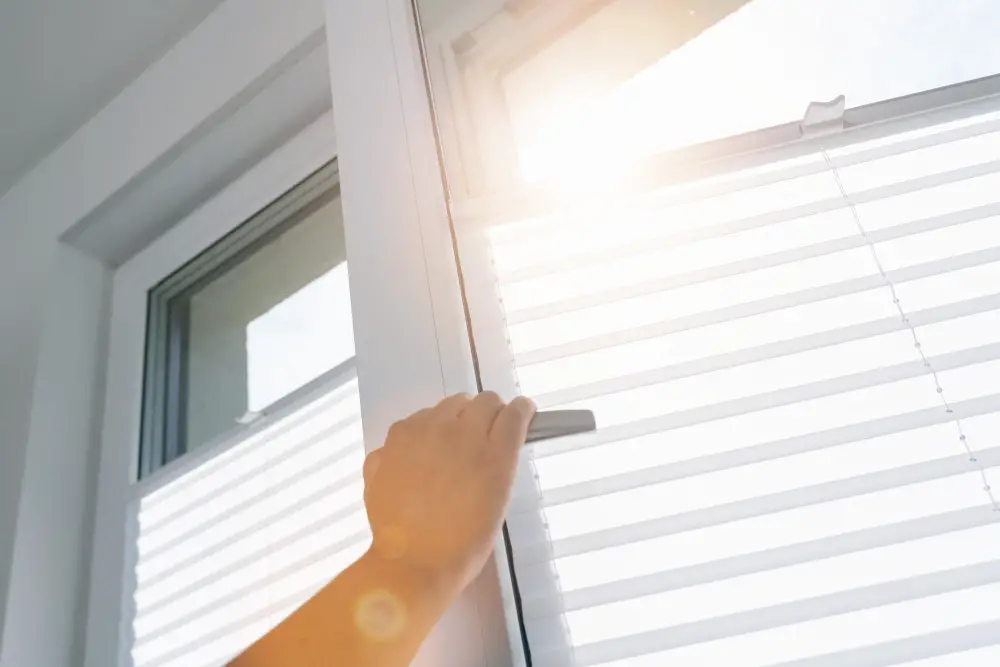
One of the main drawbacks is that they may not be as secure as drilled-in blinds. No-drill options rely on tension, adhesive, suction cups or magnets which can come loose over time and require readjustment.
Some types of no-drill blinds may not be suitable for larger or heavier window treatments due to weight limitations.
Another disadvantage is that certain types of no-drill blinds may limit your ability to open and close your windows fully if they obstruct the frame in any way. This could potentially impact ventilation and air flow in your home.
Lastly, while installing no-drill window treatments might seem like an easy DIY project at first glance; it’s important to note that it still requires careful measuring and installation techniques – especially when dealing with larger windows or heavy materials such as wood slats.
Measuring Windows for Blinds

Measuring the window accurately will ensure that you purchase the right size of blinds and avoid any issues during installation. To get started, grab a measuring tape and follow these simple steps:
1. Measure the width: Start by measuring across the top of your window frame from one side to another in three different places (top, middle, bottom). Record each measurement.
2. Measure height: Next, measure from the top of your window frame down to where you want your blind to hang (usually just above or below the glass).
Again take measurements at three different points on both sides.
3. Choose smallest measurements: Once all six measurements are taken for width and height respectively choose smallest ones as they will be used for ordering or purchasing new blinds.
Choosing the Right Blinds
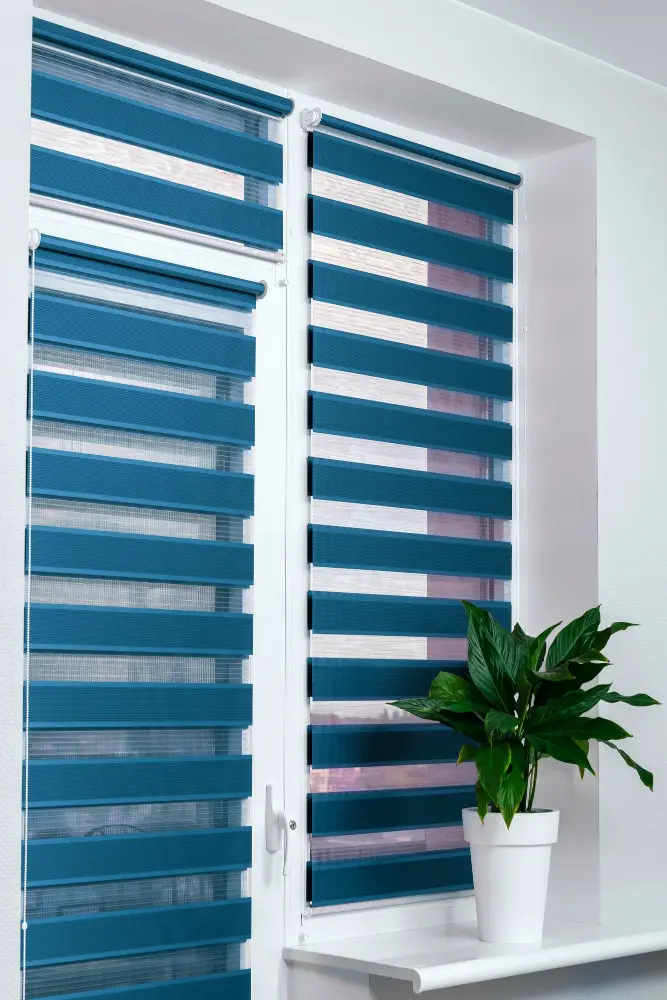
There are various types of no-drill blinds available in the market, such as tension rod blinds, magnetic blinds, self-adhesive or peel-and-stick blinds, suction cup-mounted shades and hook & loop fastener mounted shades. Each type has its unique features and benefits.
Before choosing a blind type for your window treatment project without drilling holes in walls or frames you should consider factors like privacy needs (light filtering vs blackout), light control preferences (room darkening vs sheer), energy efficiency requirements (insulating properties) as well as aesthetic considerations such as color scheme compatibility with existing interior design elements.
It’s also important to measure the dimensions of each window accurately before purchasing any blind style. This will help you avoid buying ill-fitting products that can cause frustration during installation or lead to unsightly gaps around edges after mounting them on windows.
Gather Required Tools
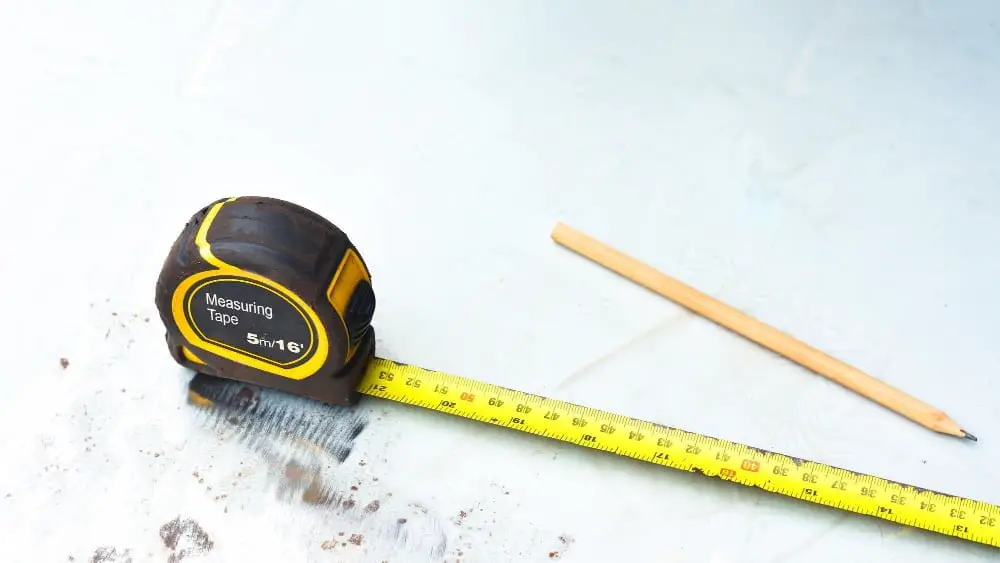
The good news is that you won’t need any power tools or complicated equipment for this project. Here are the basic items you’ll need:
Measuring tape: To measure your windows accurately and ensure a perfect fit.
Pencil and paper: To jot down measurements and keep track of which window each blind will go on.
Level: To make sure your blinds are straight when installed.
Scissors or utility knife: For cutting any excess material from the blinds if needed.
Cleaning supplies: A damp cloth or cleaning solution to clean the window frame before installation, ensuring proper adhesion of self-adhesive options like hook & loop strips, suction cups, etc.
No-drill mounting hardware kit (depending on what type of no-drill blind option you choose): Tension rods for tension rod shades; magnetic brackets for magnetic shades; adhesive strips/hook & loop tapes/suction cups/Command Strips depending upon which one suits best with your chosen shade style.
By having these essential tools at hand before starting work on installing no-drill window treatments can save time in running back-and-forth between tasks while also making sure everything goes smoothly during installation!
Preparing the Window

This step is crucial in ensuring that your blinds fit perfectly and stay securely in place. First, clean the window frame thoroughly with a damp cloth to remove any dirt or debris that may interfere with adhesion.
Next, measure the width of your window frame accurately using a tape measure and note down these measurements for reference later on.
If you’re planning on installing tension rod blinds or magnetic blinds, ensure that there are no obstructions such as locks or handles along the top of your window frame where you plan to install them. For self-adhesive and suction cup options, make sure that there are no cracks or chips in the glass surface as this can affect their ability to stick correctly.
Installing Tension Rod Blinds
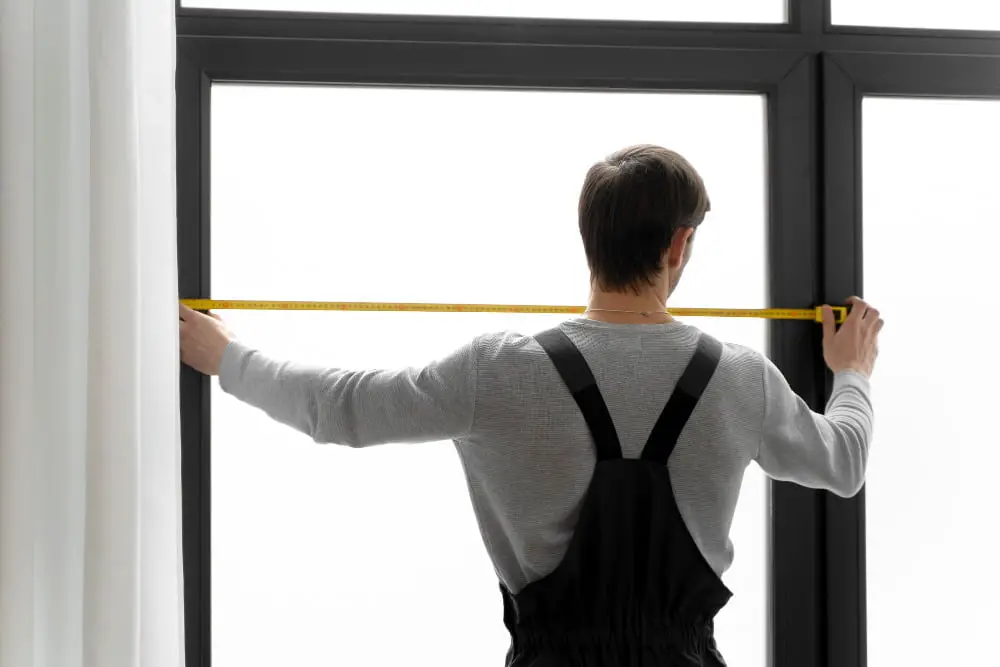
They are easy to install and can be adjusted as needed. To install tension rod blinds, start by measuring the width of your window frame.
Then, choose a tension rod that is slightly smaller than the width of your frame.
Next, insert one end of the tension rod into one side of the window frame and then twist it until it fits snugly against both sides. Repeat this process with the other end of the tension rod on the opposite side.
Once you have secured both ends in place, attach your chosen type of blind onto each hook or loop attached to either end. It’s important to note that while these types do not require any drilling or screws; they may not be suitable for heavier materials such as wooden Venetian blinds or curtains made from thick fabrics like velvet.
Fitting Magnetic Blinds

They are easy to install and remove, making them perfect for renters or those who like to change their decor frequently. To fit magnetic blinds, you will need to measure your window frame accurately.
Firstly, clean the surface of the metal frame where you want to attach the magnetic brackets with rubbing alcohol and let it dry completely. Then place one bracket at each corner of your window frame; make sure they align correctly before sticking them on.
Next, attach the headrail onto these brackets by sliding it into place until it clicks securely in position. Hang up your blind slats onto this headrail using its built-in magnets that snap together easily.
It’s important not to overload these types of blinds as they may fall off if too heavy or unbalanced; always check weight capacity guidelines provided by manufacturers before purchasing any type of no-drill blind solution.
Installing Self-Adhesive Blinds
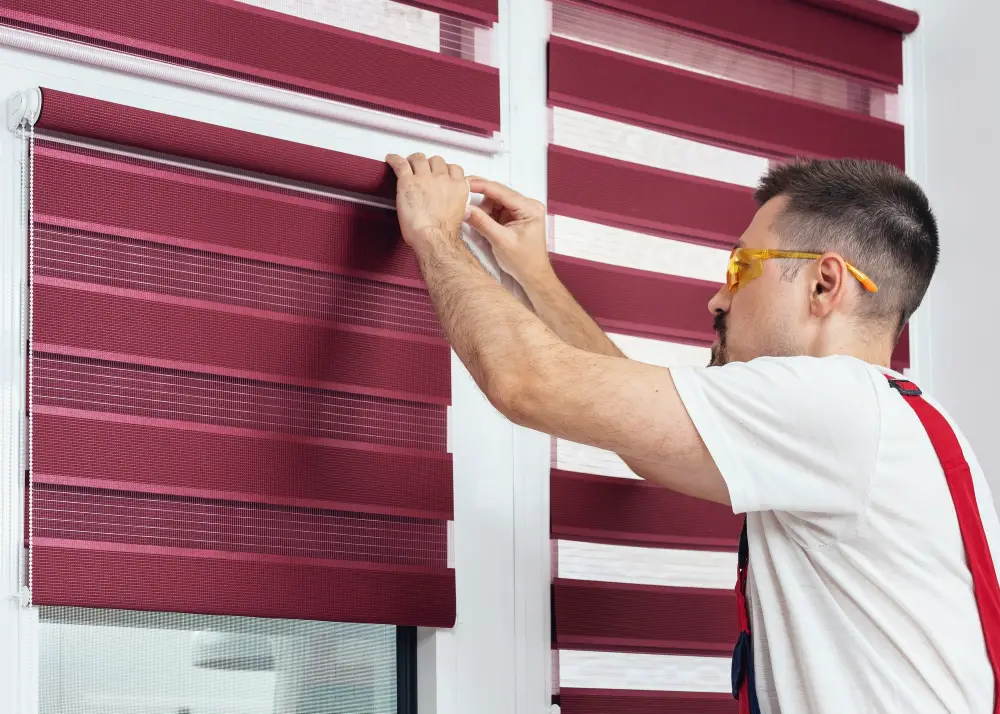
These types of blinds come with an adhesive strip that allows them to be easily attached to the window frame or glass. Here’s how you can install self-adhesive blinds without any hassle.
First, measure your window accurately and purchase the right size of self-adhesive blind according to your measurements. Next, clean the surface where you will attach the blind thoroughly using rubbing alcohol or a mild detergent solution and let it dry completely.
Peel off one side of the adhesive tape from each bracket and stick them onto both sides of your window frame at equal distances from each other. Make sure they’re level before pressing firmly into place.
Now peel off another layer on top of these brackets’ sticky side, exposing more adhesive material that will hold up against gravity when attaching shades later on! Carefully aligning with these brackets’ positionings is crucial as it ensures proper alignment during installation time!
Attaching Suction Cup Blinds

They’re easy to install and remove, making them perfect for renters or anyone who wants a temporary solution. Here’s how you can attach suction cup blinds:
1. Clean the Window: Before attaching the suction cups, make sure that your window is clean and dry.
2. Attach Suction Cups: Place the suction cups on each corner of your window frame where you want to hang your blind.
3. Install Brackets: Once you have attached all four suction cups, slide in brackets into each one of them.
4. Hang Your Blind: hang your blind onto these brackets by sliding it into place until it clicks securely in position.
It’s important to note that while this method doesn’t require any drilling or permanent fixtures on walls or frames; however, they may not be suitable for heavy-duty use as they rely solely on their adhesive strength which might weaken over time due to humidity changes etc., so keep an eye out if there are any signs of loosening up over time and reattach accordingly.
Installing Hook & Loop Blinds
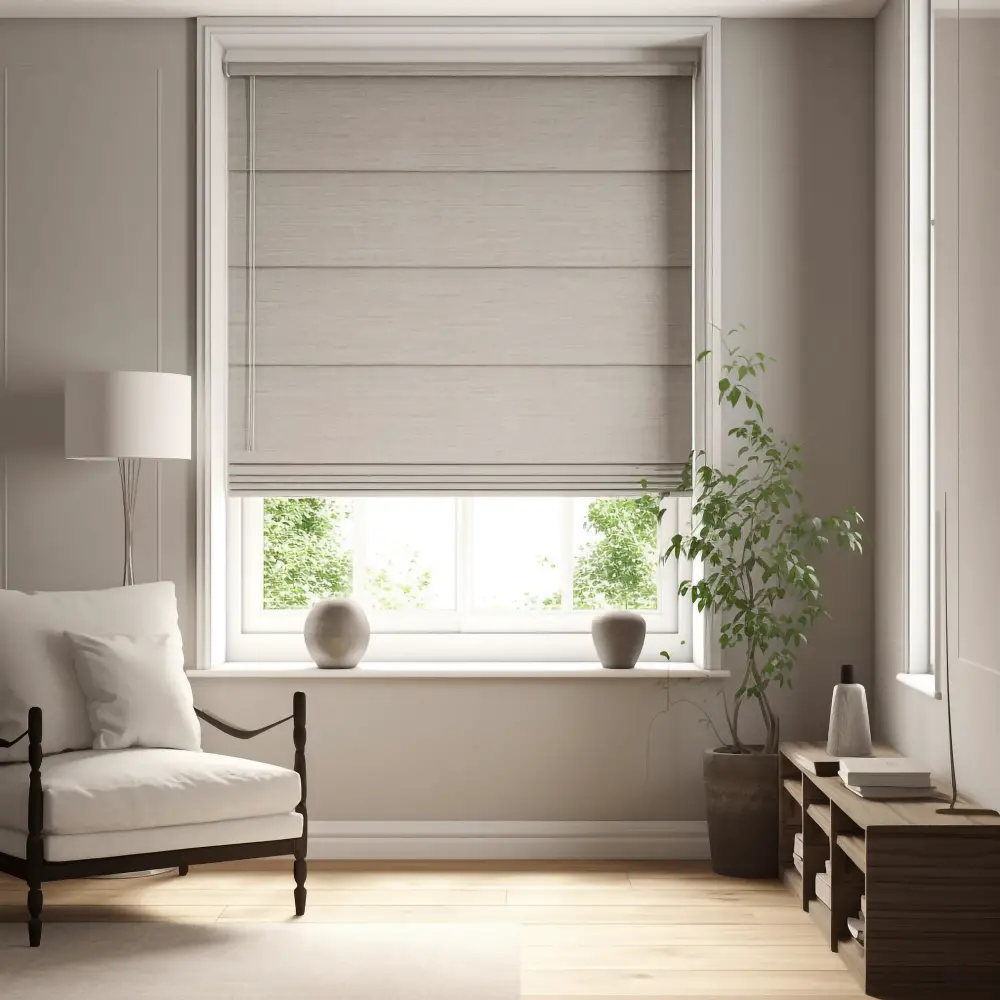
They come with a self-adhesive strip on the back of the blind, which attaches to a matching strip that you attach to your window frame. Here’s how you can install hook and loop blinds without drilling:
1. Measure your window: Start by measuring the width and length of your window frame.
2. Choose the right size: Once you have measured your windows, choose hook and loop blinds that fit within those measurements.
3. Clean surface area: Before attaching any adhesive strips, make sure to clean both surfaces thoroughly with rubbing alcohol or soap water solution.
Attach adhesive strips: Peel off one side of each adhesive strip provided in the package then stick them onto each corner at top edge on backside of blind panel.
Positioning Blind Panel: Carefully position it over corresponding spots where other half (loop) will be attached later
Attach remaining Adhesive Strips: Now peel off protective layer from other half (loop) tape provided in package, align it properly over already installed hooks so they get stuck together firmly.
Test for stability: After installation check if everything is stable enough before using them regularly.
Hook & Loop Blinds are an excellent choice for renters who want privacy but don’t want permanent fixtures or holes drilled into their walls or frames.
Weight Capacity of Command Strips
They’re easy to use and don’t require any drilling or screws. However, it’s important to note that not all Command Strips are created equal in terms of weight capacity.
Before using them for your window blinds installation, make sure you choose the right type of strips with enough weight capacity for your specific blind model.
To determine the appropriate strip strength needed for your blinds, check the manufacturer’s instructions or packaging information on how much they weigh and then select a corresponding command strip product accordingly.
Using strips with insufficient weight capacity can lead to damage or even accidents if they fail under pressure from heavier window treatments such as curtains or drapes.
Troubleshooting Common Issues
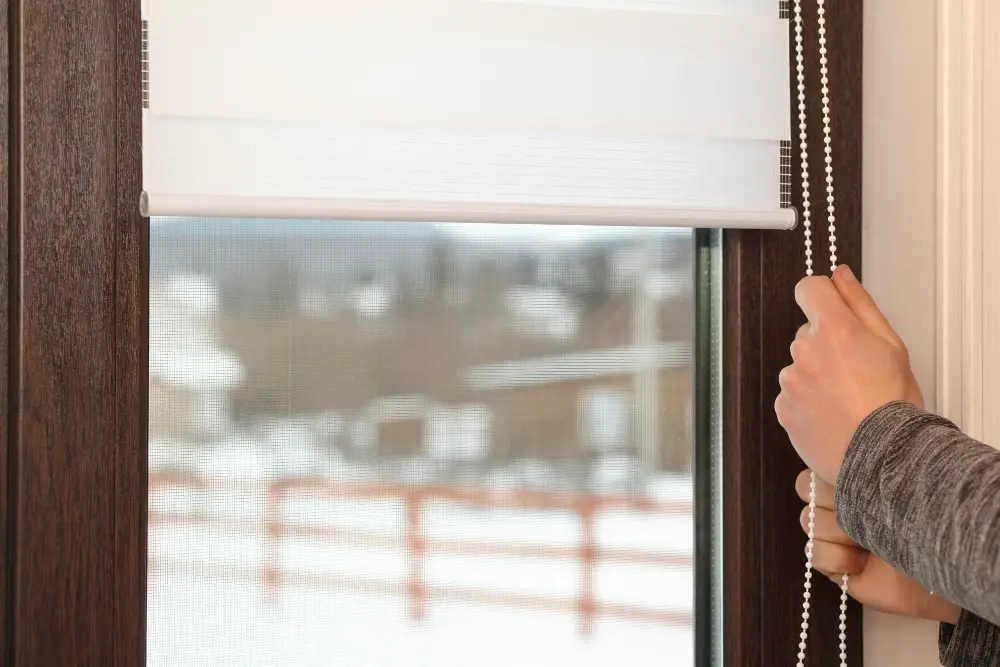
One of the most common problems is when the blinds don’t fit properly or are too loose. This can happen if you didn’t measure your window correctly or if the tension rod isn’t tight enough.
To fix this issue, try adjusting the tension rod to make it tighter or use a larger size for a better fit.
Another issue that may arise is when self-adhesive strips lose their grip and fall off over time due to humidity or temperature changes in your home. In this case, consider using stronger adhesive strips designed for heavier loads.
If suction cups aren’t sticking well on windows with condensation buildup, clean both surfaces thoroughly before reapplying them.
Lastly, ensure that all components are securely attached and tightened as loose fittings could cause damage to both blind and window frame over time.
Cleaning and Maintenance

Regular cleaning will not only help to keep them looking their best but also extend their lifespan. The good news is that cleaning no-drill blinds is a breeze! You can use a soft cloth or duster to remove any dust or debris from the surface of the blinds.
For more stubborn stains, you can use a mild detergent solution and gently wipe down the affected area with a damp cloth.
It’s essential to avoid using harsh chemicals or abrasive materials when cleaning your no-drill blinds as they may damage the surface of the material. Be careful not to bend or twist any parts of your blind during maintenance as this could cause permanent damage.
In terms of maintenance, it’s always advisable to check for loose screws on tension rod-style window treatments periodically. If there are any loose screws found in magnetic window treatments like magnetic strips and suction cups after installation then repositioning might be necessary.
Safety Tips

Before you begin the installation process, make sure to read and follow all manufacturer instructions carefully. Here are some additional safety tips to keep in mind:
1. Use proper tools: Make sure you have all the necessary tools for your specific type of no-drill blinds installation.
2. Wear protective gear: Wear gloves and eye protection when handling sharp or heavy objects.
3. Secure ladders: If using a ladder, ensure that it is stable and secure before climbing up.
4. Keep children away from work area: Children should not be allowed near the work area during installation as they may accidentally knock over equipment or get hurt by falling objects.
5. Follow weight limits: Be aware of weight limits for each type of no-drill blind attachment method so as not to overload them with too much weight which can cause them to fall off unexpectedly.
No-Drill Window Treatment Considerations

No-drill blinds are a popular choice for those who want to avoid drilling holes in their walls or windowsills. However, before you decide on this type of window treatment, there are some considerations you should keep in mind.
Firstly, no-drill blinds may not be suitable for all types of windows. For example, if your windows have an irregular shape or size that doesn’t fit standard blind measurements and fittings then no-drill options might not work well.
Secondly, the weight capacity of the adhesive used is important when considering no-drill blinds as they can fall off if too heavy a load is placed on them.
Thirdly and most importantly – safety! If you have young children or pets at home who like to play with cords hanging from window treatments then cordless options such as magnetic or tension rod blinds would be more appropriate than self-adhesive ones which come with cords that could pose choking hazards.
Installing No-Drill Blinds: DIY or Professional?
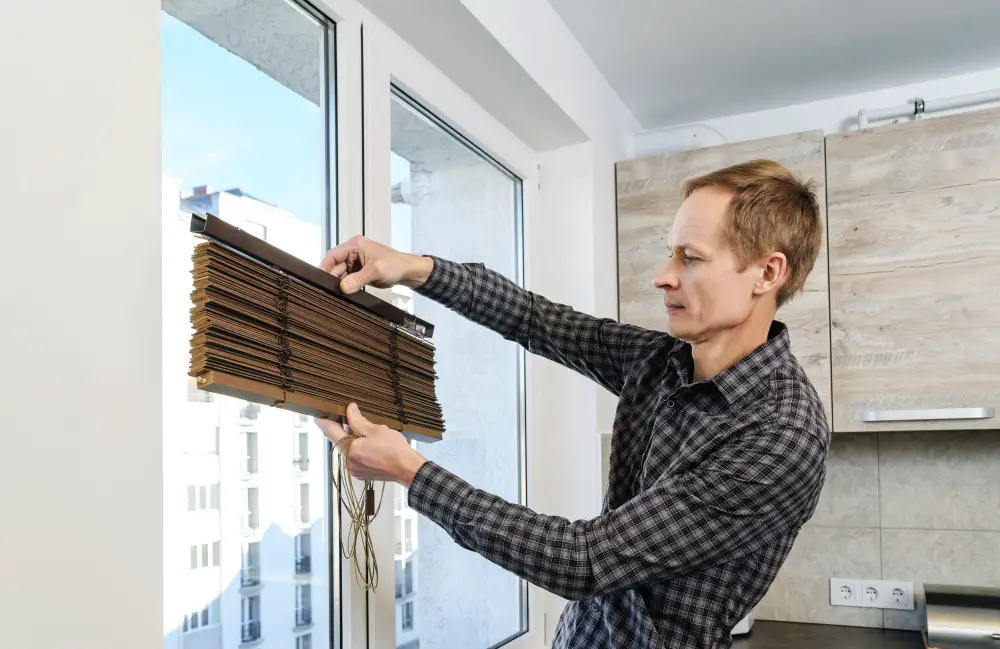
If you’re not confident in your abilities or don’t have the necessary tools, it may be best to hire a professional to do the job for you. A professional installer will ensure that your blinds are installed correctly and securely, giving you peace of mind knowing that they won’t fall down or cause any damage.
On the other hand, installing no-drill blinds yourself can save money on installation costs and give you more control over how they look and function. With step-by-step instructions available online or from manufacturers’ guides included with each product purchase, even beginners can successfully install their own window treatments.
Ultimately, whether to install no-drill blinds yourself or hire a professional depends on your level of comfort with DIY projects as well as budget considerations.
FAQ
How do you attach blinds without drilling?
Attach blinds without drilling by using tension rods or adhesive mounting strips.
Can command strips hold blinds?
Yes, command strips can hold blinds by using command hooks that attach to the wall or window frames for easy mounting.
How do you hang blinds without screws or nails?
To hang blinds without screws or nails, cut vertical strips of tape matching the height of the blind’s headrail, apply them to its rear surface at 15-30 cm intervals depending on the blind’s weight, and press down firmly before hanging.
How do no drill window blinds work?
No drill window blinds work by utilizing specialist frames and headrails that attach to the window either through clipping into the uPVC around the glass or compressing against the recess wall, eliminating the need for brackets.
What are the best adhesive mounting options for installing window blinds without drilling?
The best adhesive mounting options for installing window blinds without drilling include tension rods, Command strips, and NoNo Brackets for their ability to provide a secure attachment without damaging the surface.
Can tension rods be used as an alternative for hanging blinds without drilling?
Yes, tension rods can be used as an alternative for hanging blinds without drilling.
Are there specific types of window blinds designed for no-drill installation?
Yes, there are specific types of window blinds, such as tension or magnetic blinds, designed for no-drill installation.
Related Stories
- How to Hang a Window Box Without Drilling: Easy and Damage-Free Guide
- Install Window Screen Without Frame Easily [Step-by-Step Guide]
- How to Board Up a Window Without Drilling: Easy, No-Drill Method Guide
- How to Hang Valance: Easy Steps for Dressing Your Windows
- How to Hang a Stained Glass Window: Easy Steps for Perfect Display
Recap

